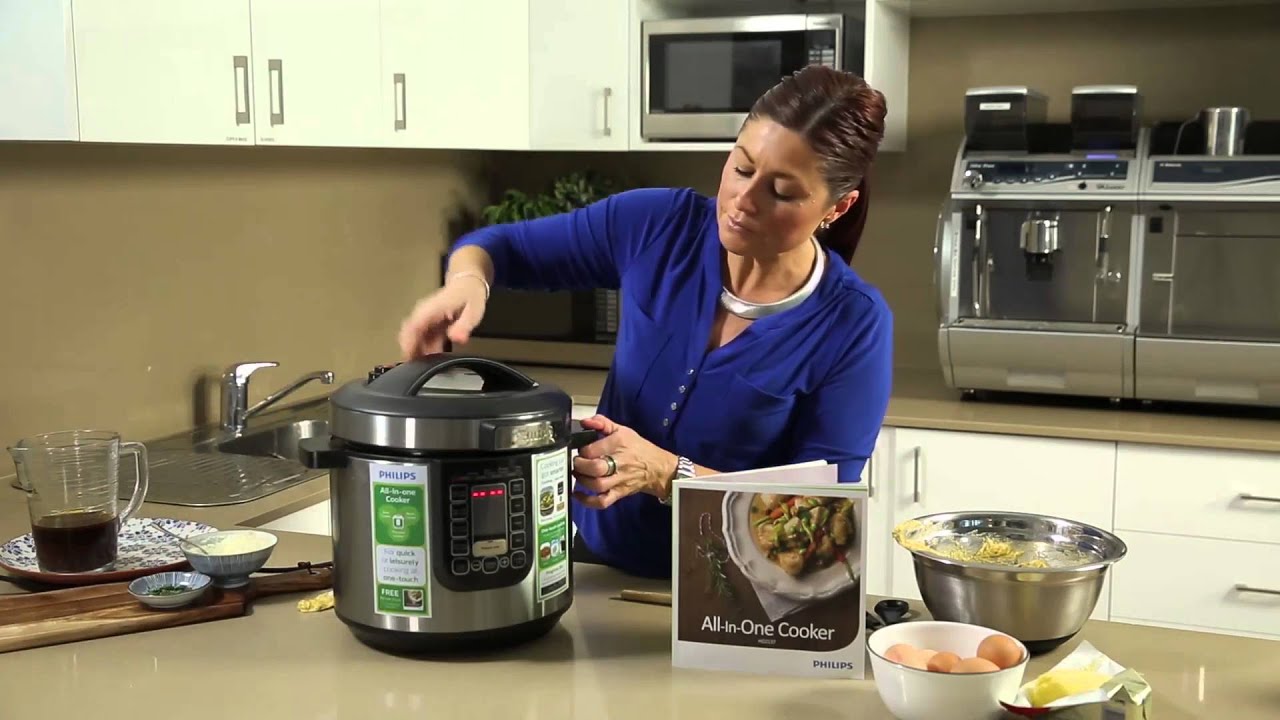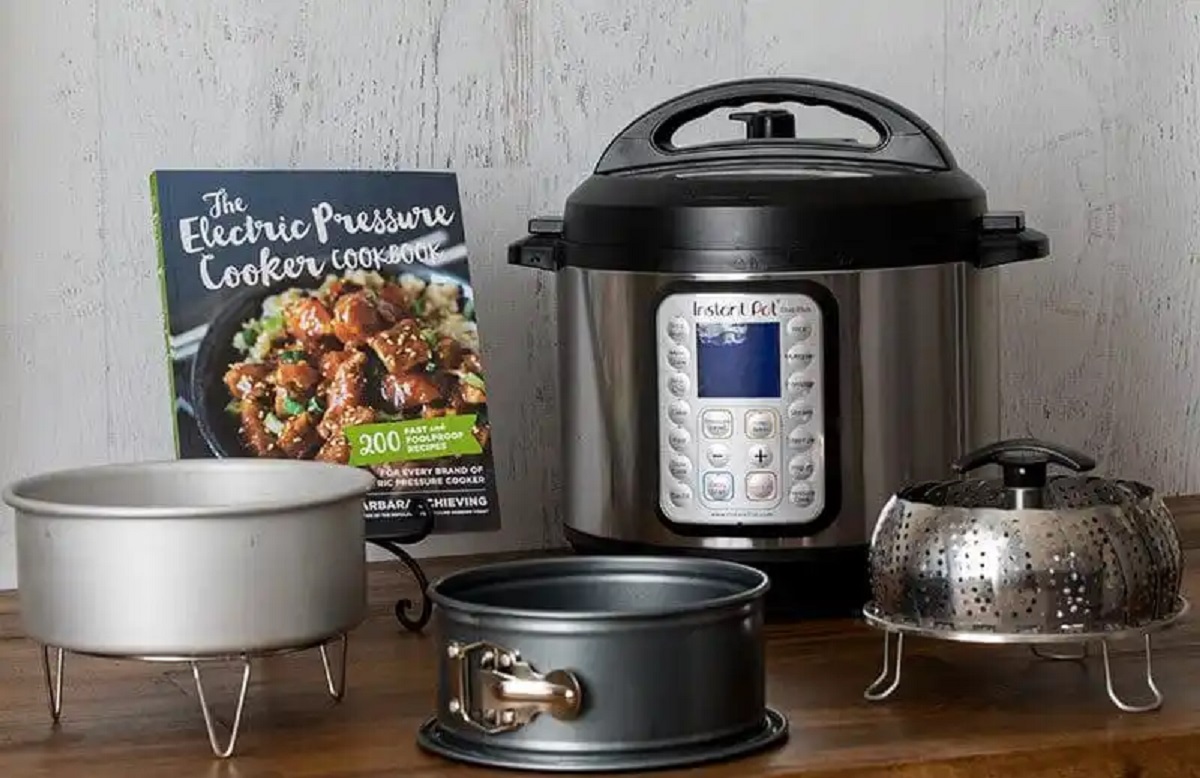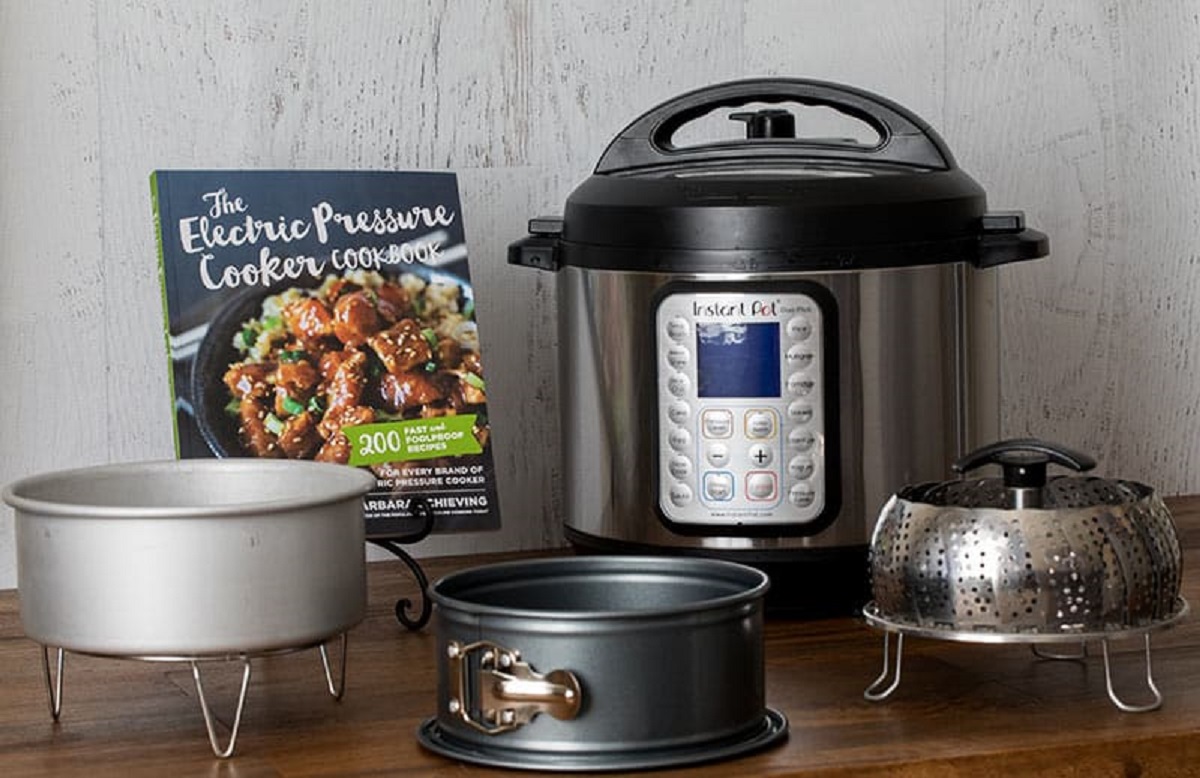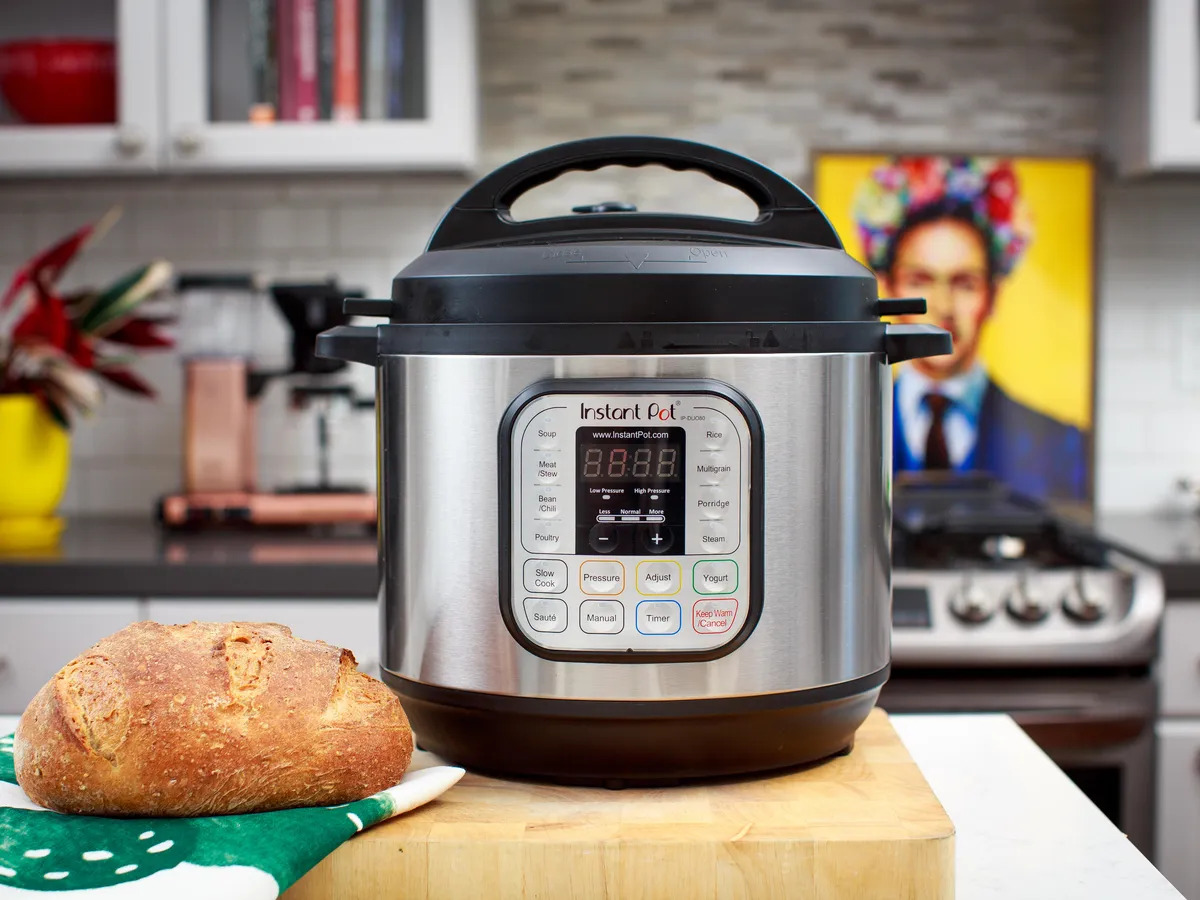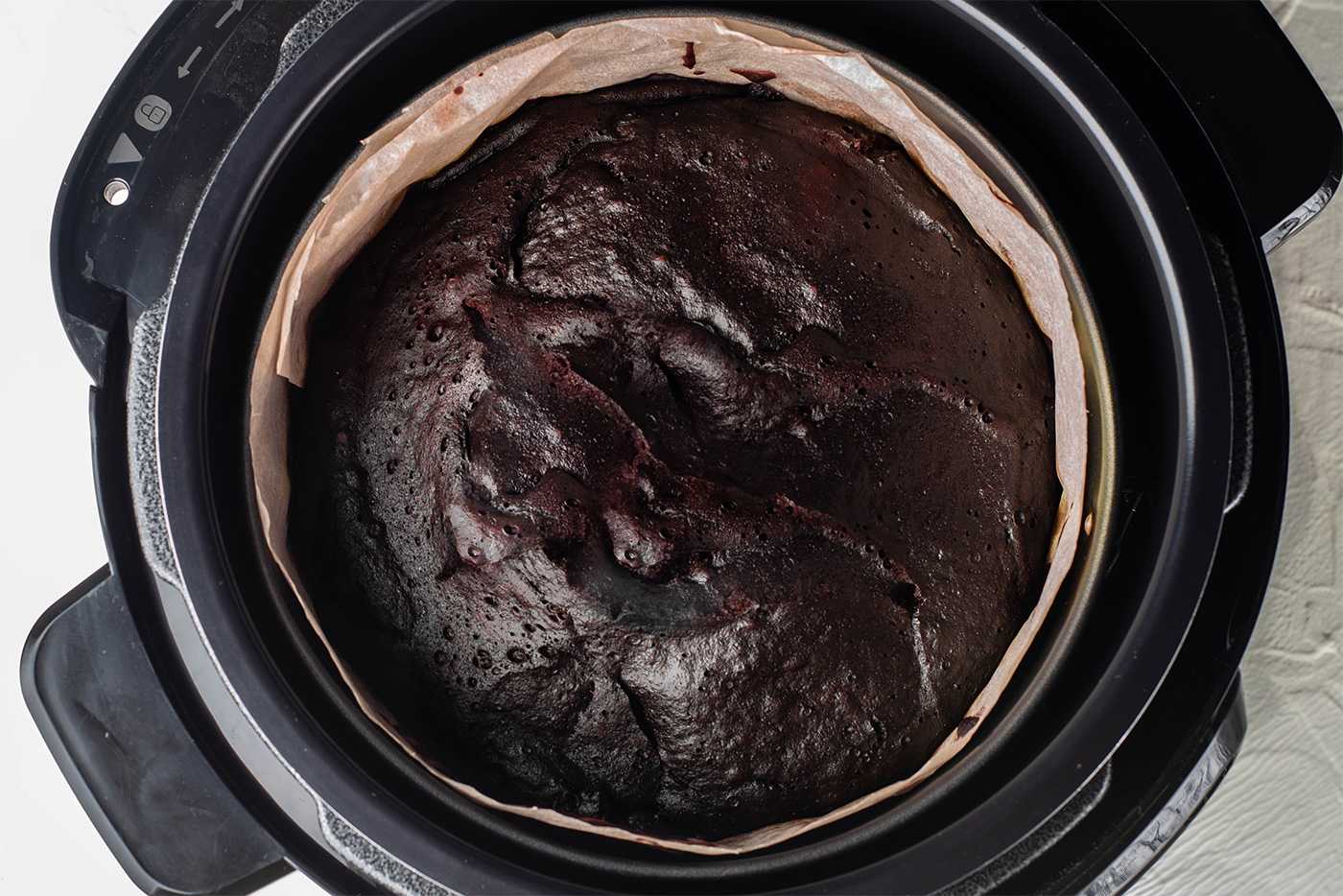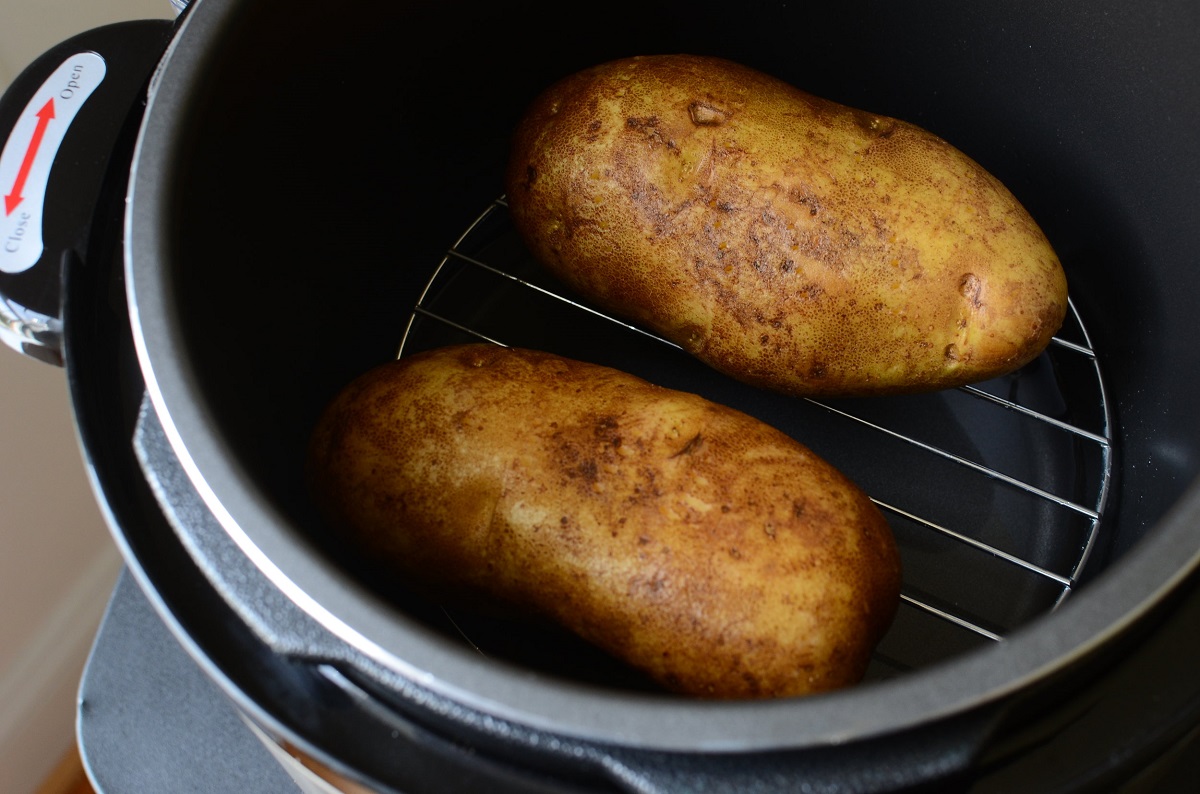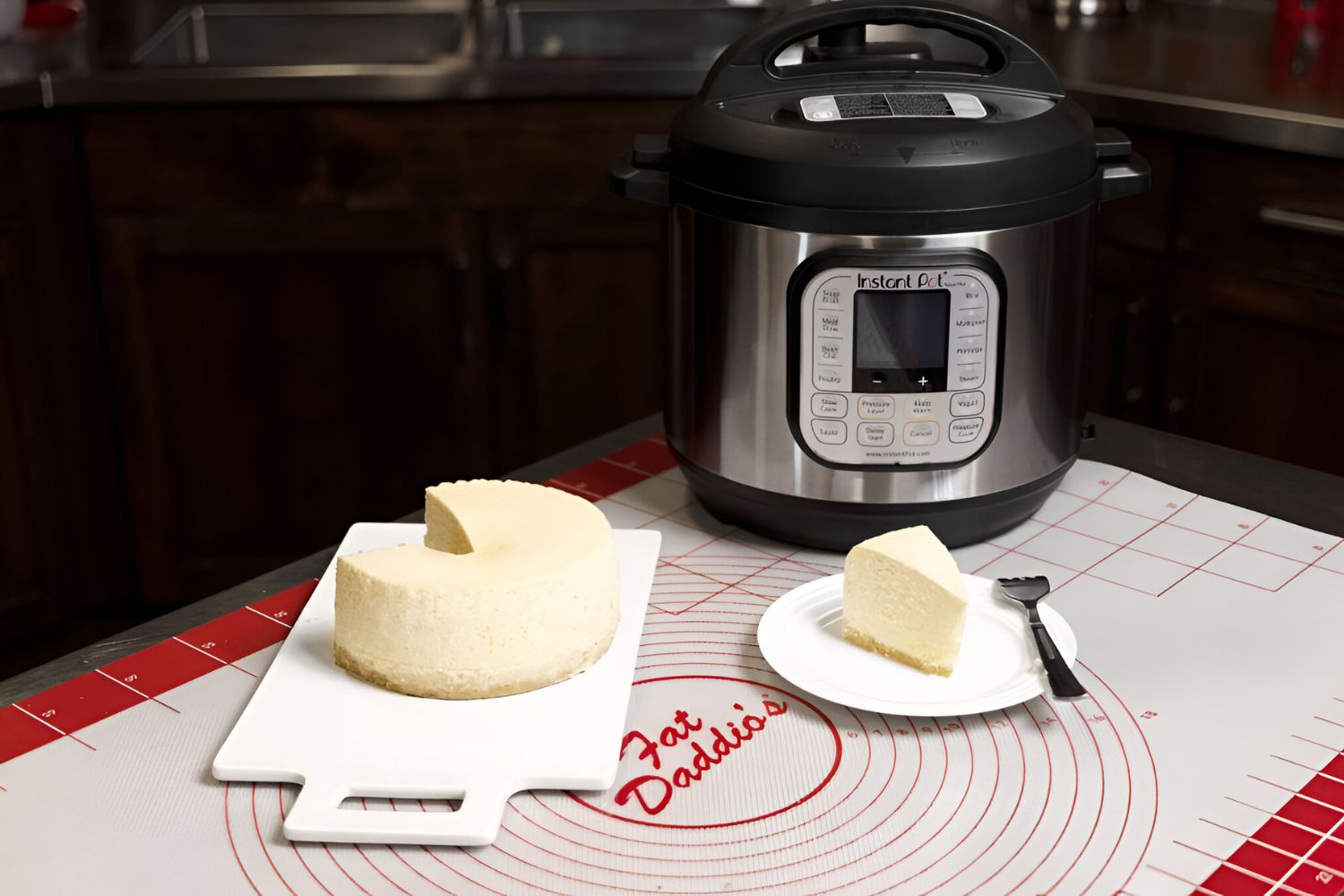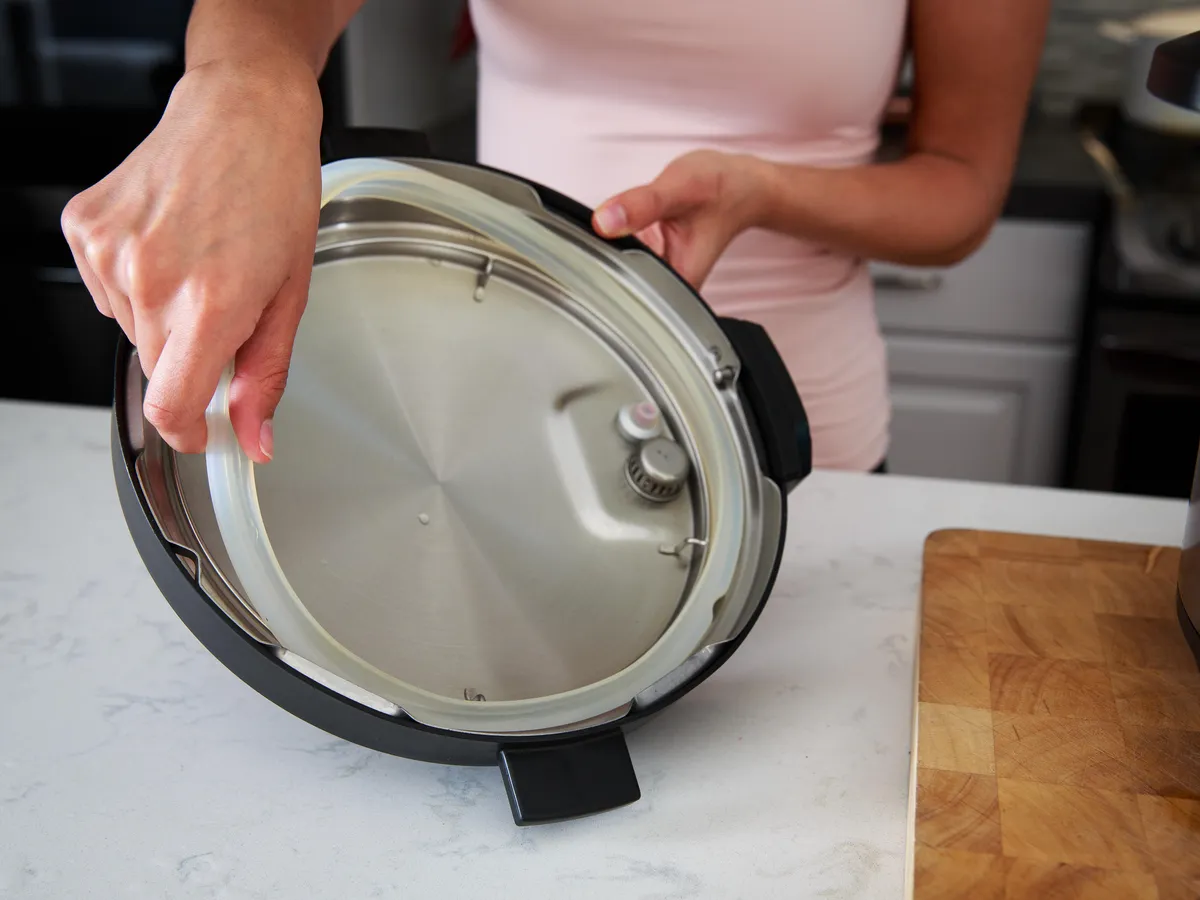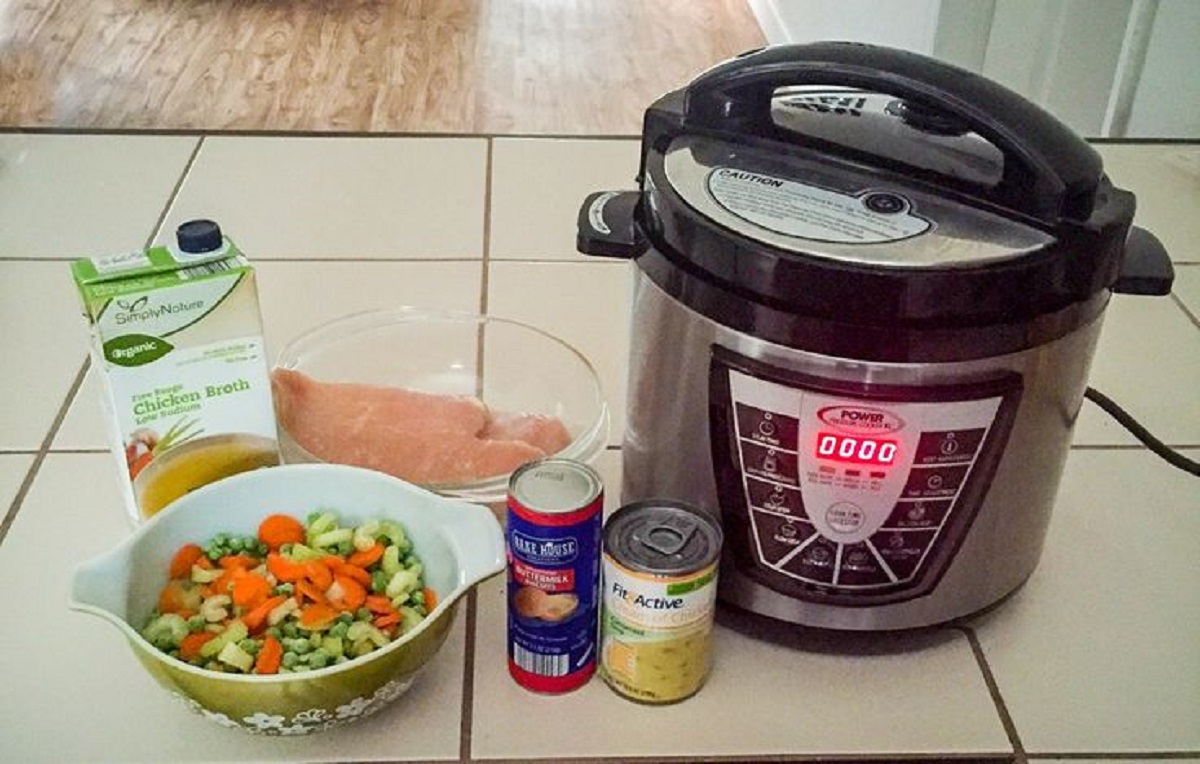Introduction
Have you ever wondered if you can bake delicious treats in an electric pressure cooker? Well, wonder no more! With the right techniques and a little bit of practice, you can turn your electric pressure cooker into a versatile baking machine.
Electric pressure cookers are known for their ability to cook food quickly and efficiently. But what many people don’t realize is that they can also be used to bake a wide variety of desserts and breads. From moist and fluffy cakes to perfectly crisp breads, the options are endless. And the best part? Baking in an electric pressure cooker allows you to save time and energy, making it a convenient choice for home bakers.
In this article, we will guide you through the process of baking in an electric pressure cooker. Whether you’re a seasoned baker or a beginner looking to explore new baking techniques, this guide is for you. We’ll discuss how to choose the right recipes, adjust cooking times and temperatures, and make the most of the baking functions on your electric pressure cooker. We’ll also share some tips, tricks, and common mistakes to avoid to ensure your baking endeavors are successful.
So, grab your apron and let’s get started on this exciting baking adventure with your electric pressure cooker! Whether you’re craving a rich chocolate cake or a batch of fresh homemade bread, we’re here to help you achieve baking perfection.
Getting Started with Baking in an Electric Pressure Cooker
Before you dive into the world of baking in an electric pressure cooker, there are a few key things to know and consider. Follow these steps to ensure you have a smooth and successful baking experience:
- Read the manual: Familiarize yourself with your electric pressure cooker’s specific features and instructions for baking. Each model may have different guidelines for temperature, pressure, and cooking times.
- Use the right accessories: To bake in an electric pressure cooker, you’ll need a suitable baking pan or dish that fits comfortably inside the cooker. Look for accessories specifically designed for pressure cooking, such as a springform pan or a silicon baking mold.
- Prepare the pressure cooker: Ensure that the pressure cooker is clean and in good working condition. Double-check that the rubber sealing ring is properly fitted to avoid any air leaks during the baking process.
- Preheat the electric pressure cooker: Just like you would preheat a traditional oven, preheating the electric pressure cooker is necessary for even baking. Follow the manufacturer’s instructions for preheating your specific model.
- Adjust the cooking time: Baking in an electric pressure cooker requires shorter cooking times compared to a conventional oven. As a general rule, reduce the cooking time specified in the recipe by about 15-20%. Keep in mind that cooking times may still vary depending on the recipe and your specific pressure cooker, so it’s important to keep a close eye on your baked goods as they cook.
- Manage the pressure release: After the cooking time is complete, it’s crucial to release the pressure properly to prevent your baked goods from becoming undercooked or overcooked. Follow the quick release or natural release method as recommended in the recipe.
By following these steps, you’ll be well on your way to baking delightful treats in your electric pressure cooker. In the next sections, we’ll delve deeper into selecting the right recipes and understanding the functions of your electric pressure cooker for baking.
Choosing the Right Recipe
When it comes to baking in an electric pressure cooker, selecting the right recipe is essential for achieving delicious results. Here are some tips to help you choose the perfect recipe for your baking adventure:
- Simplify your recipe: Start with simple recipes that are specifically designed for electric pressure cookers. These recipes are typically formulated to work well with the unique cooking conditions of a pressure cooker, ensuring better results. Look for recipes that mention they are suitable for pressure cooking or have been adapted specifically for this method.
- Consider the texture: Certain baked goods, such as cakes, breads, and custards, tend to work best in an electric pressure cooker. These recipes typically have a moist texture and are not overly sensitive to variations in temperature and cooking time. Avoid recipes that require precise and delicate techniques, such as delicate pastries or soufflés.
- Adapt traditional recipes: Many traditional oven-baked recipes can be adapted for electric pressure cooking. Look for recipes that have similar cooking times and temperatures. Keep in mind that you may need to adjust the cooking time slightly to account for the faster and more efficient cooking of the pressure cooker.
- Consider ingredient compatibility: Some ingredients may perform differently in an electric pressure cooker compared to a traditional oven. For example, recipes that rely heavily on browning and caramelization may not achieve the same results in a pressure cooker. On the other hand, recipes that require long, slow cooking, such as braised meats or stews, are better suited for pressure cooking rather than baking.
- Experiment and have fun: Don’t be afraid to try new recipes and experiment with flavors and ingredients. Baking in an electric pressure cooker opens up a world of possibilities, so embrace the opportunity to get creative in the kitchen.
Remember to read the recipe thoroughly before you begin and double-check any specific instructions or modifications needed for pressure cooking. By selecting the right recipes for your electric pressure cooker, you’ll set yourself up for baking success and enjoy a wide range of delectable treats.
Adjusting Cooking Times and Temperatures
One of the key aspects of baking in an electric pressure cooker is understanding how to adjust cooking times and temperatures to achieve optimal results. Here are some guidelines to help you navigate the adjustments needed:
- Reduce the cooking time: Baking in an electric pressure cooker generally requires shorter cooking times compared to traditional ovens. As a rule of thumb, you can reduce the cooking time specified in the recipe by about 15-20%. However, keep in mind that cooking times may vary depending on the specific recipe and your pressure cooker, so it’s important to keep a close eye on your baked goods as they cook.
- Modify the temperature: Electric pressure cookers typically operate at a higher temperature than conventional ovens. For most recipes, adjusting the temperature to the standard pressure cooking temperature of 250°F (120°C) should suffice. However, if a recipe calls for a specific temperature, you can adjust it by reducing it by about 25°F (10°C) to account for the higher heat generated by the pressure cooker.
- Consider the texture: The cooking time and temperature adjustments are influenced by the desired texture of your baked goods. If you prefer a moister texture, you may need to decrease the cooking time slightly. On the other hand, if you prefer a slightly drier texture or more browning, you can increase the cooking time or finish the baked goods under the broiler for a few minutes after pressure cooking.
- Use a cooking time chart: Some pressure cooker manufacturers provide cooking time charts for specific types of food, including baking. These charts can be helpful in determining the approximate cooking time for different recipes. However, it’s important to note that these charts are intended as general guidelines, and you may still need to make adjustments based on the specific recipe and your pressure cooker model.
- Practise and observe: Baking in an electric pressure cooker may require some trial and error to find the perfect cooking time and temperature for your desired results. It’s recommended to keep notes of your adjustments and observations, so you can replicate your successes in future baking endeavors.
Remember, adjusting cooking times and temperatures is a crucial part of baking in an electric pressure cooker. With practice and attention to detail, you’ll be able to fine-tune these adjustments and achieve perfectly baked treats that are moist, tender, and full of flavor.
Understanding the Baking Functions on Your Electric Pressure Cooker
Electric pressure cookers come equipped with different baking functions and settings that can enhance your baking experience. Here are some common baking functions and their purpose:
- Pressure Cook: This is the primary function you’ll be using for baking in an electric pressure cooker. It allows you to create a sealed, high-pressure environment that cooks your baked goods quickly and evenly. Make sure to select the appropriate pressure level (high or low) as specified in the recipe.
- Bake: Some electric pressure cookers have a dedicated bake function, which is specifically designed for baking. This function regulates the temperature and pressure to create an oven-like environment. It’s ideal for recipes that require a consistent temperature throughout the baking process.
- Sauté: While not strictly a baking function, the sauté function can be useful for preparing ingredients before baking. You can use this function to melt chocolate, toast nuts, or lightly cook fruits for certain baking recipes.
- Keep Warm: After your baked goods are done, the keep warm function can come in handy to maintain their temperature until you’re ready to serve. However, be cautious not to leave delicate baked goods on the keep warm setting for too long, as they may become overcooked or dry.
- Slow Cook: Although not commonly used for baking, the slow cook function can be utilized to achieve specific textures in certain recipes. For example, you can use this function to make a slow-cooked fruit compote that can be used as a topping for cakes or desserts.
It’s important to consult your electric pressure cooker’s instruction manual to understand the specific baking functions and settings available on your model. Familiarize yourself with the functionality and temperature range of each function to ensure you use the appropriate setting for your baking needs.
Remember that every electric pressure cooker is unique, and the settings may vary. It’s essential to follow the specific instructions provided by the manufacturer and the recipe guidelines to achieve the best baking results.
Tips and Tricks for Successful Baking
Baking in an electric pressure cooker can be a unique and rewarding experience. Here are some tips and tricks to help you achieve successful results:
- Grease your baking pan: To prevent your baked goods from sticking, make sure to grease the baking pan or use parchment paper. This will ensure easy removal and preserve the shape of your baked treats.
- Add liquid and moisture: Baking in an electric pressure cooker can lead to drier results compared to traditional ovens. To counteract this, add a bit more liquid or moisture to your recipes. This can be achieved by incorporating ingredients such as yogurt, applesauce, or extra liquid in the batter.
- Avoid overfilling: Do not fill the baking pan to the brim when baking in an electric pressure cooker. Leave some space for the baked goods to rise and expand during the cooking process. This will help prevent overflow and ensure even cooking.
- Use a trivet or foil sling: Elevating your baking pan on a trivet or using a foil sling helps create better airflow and even cooking. It also makes it easier to remove the hot pan from the pressure cooker once baking is complete.
- Test for doneness: Use a toothpick or cake tester to check if your baked goods are done. Insert it into the center of the cake or bread, and if it comes out clean or with a few crumbs, it’s ready. If it comes out wet, continue cooking for a few more minutes.
- Allow for natural pressure release: After baking, it’s crucial to allow the pressure to release naturally for a few minutes before opening the lid. This helps the baked goods to set and prevents them from collapsing or deflating suddenly.
- Experiment with flavors: Baking in an electric pressure cooker offers versatility in flavors. Add unique ingredients like spices, fruits, or nuts to enhance the taste of your baked goods. Get creative and explore different combinations to find your signature recipes.
- Practice patience: Baking in an electric pressure cooker may require some trial and error. Be patient and persistent, as perfecting the cooking time and temperature for your specific model takes practice. Keep experimenting and adjusting until you achieve the desired results.
By keeping these tips and tricks in mind, you’ll be well-equipped to create delicious and successful baked goods in your electric pressure cooker. Remember to have fun and enjoy the process of discovering the unique capabilities of your pressure cooker in the realm of baking!
Common Mistakes to Avoid
While baking in an electric pressure cooker can be an exciting adventure, it’s important to be aware of some common mistakes that may hinder your baking success. Here are a few common pitfalls to avoid:
- Overfilling the baking pan: It can be tempting to fill the baking pan to its maximum capacity, but overfilling can lead to uneven cooking and spillovers. Leave some room for the batter to rise and expand during the baking process.
- Not adjusting cooking times: As mentioned earlier, cooking times in an electric pressure cooker are generally shorter than in traditional ovens. Failure to adjust the cooking time accordingly can result in overcooked or burnt baked goods.
- Using the wrong pan size: Make sure to use a baking pan that fits comfortably inside your electric pressure cooker. Using a pan that is too small or too large may lead to improper cooking and uneven results.
- Skipping proper preheating: Just like with a traditional oven, preheating your electric pressure cooker is crucial for even baking. Skipping this step may result in poorly cooked or underbaked goods.
- Releasing pressure too quickly: After the cooking time is complete, it’s important to release the pressure properly according to the recipe instructions. Releasing the pressure too quickly can cause sudden temperature changes and may result in collapsed or deflated baked goods.
- Not following the recipe: Recipes specifically designed for electric pressure cookers have been carefully tested and adapted for this cooking method. Deviating from the recipe, especially for baking, may lead to less-than-desirable outcomes. Follow the recipe instructions closely for best results.
- Opening the lid too soon: It’s crucial to resist the temptation to open the lid immediately after the cooking time is over. Opening the lid too soon can cause a sudden drop in temperature inside the pressure cooker, impacting the texture and overall quality of your baked goods.
- Not allowing time to cool: Just like with baked goods from a traditional oven, it’s important to allow your pressure-cooked treats to cool before removing them from the pan or serving. This allows for the flavors to develop and the texture to set properly.
Awareness of these common mistakes will help you avoid them and increase your chances of baking success with your electric pressure cooker. By following proper techniques and guidelines, you’ll be well on your way to creating mouthwatering treats every time.
Recommended Baking Recipes for an Electric Pressure Cooker
Are you ready to put your electric pressure cooker to good use and bake up some delicious treats? Here are a few recommended baking recipes that work exceptionally well in an electric pressure cooker:
- Chocolate Lava Cake: Indulge in the rich and gooey goodness of a chocolate lava cake made in your electric pressure cooker. The high-pressure environment creates a perfect lava center, giving you a decadent dessert that will impress your guests.
- Banana Bread: Utilize those overripe bananas by making a moist and flavorful banana bread in your electric pressure cooker. The pressure cooking method helps to infuse the bread with intense banana flavor and keeps it incredibly tender.
- Cheesecake: Create a velvety and creamy cheesecake right in your electric pressure cooker. The gentle heat and moisture retention of the pressure cooker provide an ideal environment for achieving a smooth and crack-free cheesecake.
- Cornbread: Enjoy fluffy and slightly sweet cornbread made effortlessly in your electric pressure cooker. The pressure cooking technique brings out the natural sweetness of the cornmeal and creates a moist and tender texture.
- Apple Crisp: Whip up a warm and comforting apple crisp in your electric pressure cooker. The pressure cooker allows the apples to become tender and infused with the cinnamon-spiced sauce, while the crisp topping stays perfectly golden and crunchy.
- Pound Cake: Bake a classic pound cake in your electric pressure cooker for a buttery and rich dessert. The pressure cooking method helps the cake to rise evenly and creates a tender crumb that will melt in your mouth.
- Sticky Toffee Pudding: Experience the comfort of a sticky toffee pudding made in your electric pressure cooker. The moist and rich pudding gets infused with a luscious toffee sauce, creating a delectable dessert that’s hard to resist.
These recipes are just a few examples of the wide range of baked goods you can create in your electric pressure cooker. Feel free to adapt and explore other baking recipes, keeping in mind the adjustments for cooking times and temperatures.
Remember to follow the recipe instructions carefully, make appropriate time and temperature adjustments, and have fun experimenting with different flavors and ingredients in your electric pressure cooker.
Conclusion
Baking in an electric pressure cooker opens up a world of possibilities for creating delicious homemade treats. By following the tips, techniques, and recipes outlined in this article, you can harness the full potential of your electric pressure cooker and achieve baking success.
Remember to start by familiarizing yourself with the specific features and functions of your electric pressure cooker. Select the right recipes that are suitable for pressure cooking and consider the adjustments needed for cooking times and temperatures. Pay attention to the texture of your baked goods and experiment with flavors to create unique and delightful treats.
Avoid common mistakes such as overfilling the baking pan, not adjusting cooking times, and not following the recipe closely. Be patient, practice, and take note of your observations and adjustments to fine-tune your baking skills with your electric pressure cooker.
Whether you’re baking a decadent chocolate lava cake, a moist banana bread, or a creamy cheesecake, your electric pressure cooker can deliver excellent results. Enjoy the convenience and efficiency of baking in this versatile appliance, and embrace the joy of creating delectable homemade goodies.
So, get ready to turn on your electric pressure cooker, gather your ingredients, and embark on a baking adventure that will impress your friends and family with the amazing treats you can create. Happy baking!







